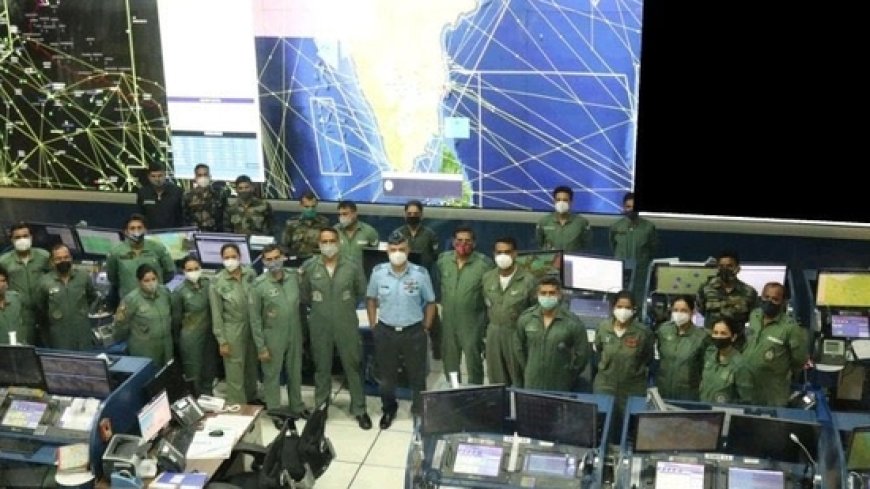Operation Sindoor: How Indian Air Force’s IACCS Saved India from Air Threats
During Operation Sindoor, the IACCS team worked behind the scenes. The Pakistani drones were not just flying randomly; they were trying to enter India and create harm. But IACCS detected them fast. They sent orders to fighter jets, radar units, and air defence systems.

Delhi [India] May 12: When India faced aerial threats from across the border, a group of alert minds and strong hearts quietly defended the nation. These were the officers working in the Integrated Air Command and Control System (IACCS). While most people were watching from their homes, they were in silent rooms watching the skies. Their quick decisions during Operation Sindoor helped protect our land from drone attacks and other air dangers, showing their true bravery without holding a weapon.
How the IACCS Works Like a Big Brain
IACCS is like the brain of India’s air defence. It connects all the radars, data systems, and officers from the Indian Army, Navy, and Air Force. Every small signal in the sky is tracked. Whether it’s from civilian airports, army radars, or fighter planes, all that information is brought together in one place. This helps the team quickly understand what’s happening and what action must be taken. Like a teacher controlling a big classroom, IACCS keeps everyone in line during dangerous times.
Role in Operation Sindoor: Quiet Yet Powerful
During Operation Sindoor, the IACCS team worked behind the scenes. The Pakistani drones were not just flying randomly; they were trying to enter India and create harm. But IACCS detected them fast. They sent orders to fighter jets, radar units, and air defence systems. India used both soft and hard-kill methods—some jammed the drones, others shot them down. Thanks to IACCS, these actions happened in time, saving lives and stopping destruction.
From Past to Present: Growing Stronger Each Day
The idea of having a connected air defence started years ago. Earlier, our systems were scattered. One base didn’t always know what the other was seeing. But with IACCS, a single Recognised Air Situation Picture (RASP) can now be shared across the country. Whether it's Air Headquarters in Delhi or a small air base in the South, everyone sees the same image. Over the years, IACCS has grown to cover more places and link more units, becoming smarter and faster.
Faces Behind the Machines: Real People, Real Duty
It’s easy to talk about systems, radars, and command centres. But behind each of them is a human. Officers who skip sleep, sit in high-pressure rooms, and make split-second choices that decide safety for crores of Indians. A photo shared recently showed the team behind IACCS—ordinary-looking people doing extraordinary work. They don’t wear capes or show up in the news often, but their service during Operation Sindoor reminds us that some heroes guard us from above, silently.

 Aryan K
Aryan K 





